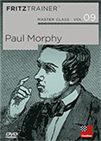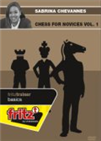Part 1: Introduction
This is the first of a three-part series. In Part 2 we will present the game as it was described in the poem, and in Part 3 we will dig deeper into the poem's historical relevance.
In Hobra intitulada scachs d’amor feta per don Franci de Castellvi e Narcis Vinyoles e Mossen Fenollar, frequently abbreviated as Scachs d'amor, a chess game with the modern rules is portrayed in the Western world for the first time in history.
The poem is written in Valencian, and was discovered as a thirteen-page codex at the chapel of the Palau de Barcelona in 1905 by Ignacio Casanovas (1872-1936), a Spanish philosopher. The original was later lost, but a photograph of the text has been kept at the Biblioteca Cataluña in Barcelona.
It is not completely certain when it was written. Firstly, it was thought to be composed in 1497, although new research points to 1475 as the correct date of its composition — this date was proposed by José Antonio Garzón Roger (b. 1963), a Spanish researcher.
Garzón Roger's colleague and compatriot Ricardo Calvo Minguez (1943-2002) published in 1999 El poema Scachs d'amor (siglo XV), primer texto conservado sobre ajedrez moderno (Madrid: Editorial Jaque XXI), which turned out to be a real revelation. More recently, Govert Westerveld (b. 1948), a Dutch independent researcher living in Spain, also published a book on the subject.
 Learn about one of the greatest geniuses in the history of chess! Paul Morphy's career (1837-1884) lasted only a few years and yet he managed to defeat the best chess players of his time.
Learn about one of the greatest geniuses in the history of chess! Paul Morphy's career (1837-1884) lasted only a few years and yet he managed to defeat the best chess players of his time.
Scachs d'amor was composed by Francesc (Franci) de Castellví y Vic (c. 1435- 1506), Narcis de Vinyoles (c. 1442-1517) and Mossén (Bernat de) Fenollar (1438-1516), three well-known Valencian public figures. Castellví was an advisor in the court of King Ferdinand II of Aragon (1452-1516); Vinyoles was married to Brianda de Santángel, niece of the banker Luis de Santángel who financed the voyage of Christopher Columbus; Fenollar was an abbot at the Valencian Cathedral and used to host poetic gatherings with notorious public figures from his community.
We can interpret that the roles of the noblemen in the game corresponded to a certain extent with their roles in real life. Castellví was a well-known chess player, so it makes sense for him to win the contest; Vinyoles was an influential lawyer and poet, so he was probably the one writing most of the verses in the poem; and Fenollar was an abbot and a kapellmeister in the court of king Ferdinand, so he met the requirements to serve as arbiter, one that would do his job rigorously and with utmost fairness.
The late 15th century was very important for chess not only due to this poem, as the royal game was also portrayed in other literary works. In Italy, Luca Pacioli (1447-1517) published Ludo scacchorum, which includes illustrations that might have been designed or perhaps even drawn by Leonardo da Vinci; in the Spanish kingdom, meanwhile, two texts that served as cornerstones for the spreading of chess appeared: Llibre dels jochs partits dels schacs en nombre de 100 by Francesch Vicent (c. 1479-1523), published in Valencia in 1495 and now sadly lost, and Repetición de amores y arte de ajedrez by Luis Ramírez de Lucena (c-1465-1530), published in Salamanca in 1497.
 This DVD is for anyone who knows the rules of chess but would like to be able to improve their game with some specific tactics and strategies. It builds on the basic principles of chess that should have already been learnt.
This DVD is for anyone who knows the rules of chess but would like to be able to improve their game with some specific tactics and strategies. It builds on the basic principles of chess that should have already been learnt.These three texts and Scachs d'amor all portray chess with its modern rules (Pacioli's Ludo scacchorum includes games that follow the rules used in the past as well), if we adhere to three criteria:
- The inclusion of the queen instead of the exotic vizier, which was present in the previous Eastern prototypes.
- The empowerment of the queen, which went from moving one square diagonally to moving as many squares as it could vertically, horizontally and diagonally.
- The more dynamic role of the bishop, which used to move two squares diagonally skipping the one in between and now moved diagonally as many squares as it could.
In Scachs d'amor castling is not yet a possibility. However, the en passant rule and the demand to let the opponent know his or her king is being checked are already included.
 The title of the text (Chess of Love) is somewhat suggestive yet ambiguous. If we consider the fact that the game was played between two noblemen, Franci de Castellví and Narcis Vinyoles (Mossen Fonellar was the arbiter), the title might be hinting at some sort of homoerotic tension, which would not have been welcomed at all during the Inquisition era.
The title of the text (Chess of Love) is somewhat suggestive yet ambiguous. If we consider the fact that the game was played between two noblemen, Franci de Castellví and Narcis Vinyoles (Mossen Fonellar was the arbiter), the title might be hinting at some sort of homoerotic tension, which would not have been welcomed at all during the Inquisition era.
Instead, we should relativize the interpretation and consider that maybe the "love" in the title is directed to the act of playing chess, as it arouses devotion from those playing the game, no matter their genre. Or, even better, as the chess players were merely actors representing Mars and Venus — under the supervision of Mercury — the act of love might signify a conflict between the god of war, sexuality and virility and the goddess of love, fertility and beauty.
[Image: Bernat Fenollar]
It is also noteworthy that the contenders were identified with the colours red and green, which correspond perfectly with the colours of the celestial bodies they represent — Mars and Venus respectively.
As Mercury is also present, we notice that all the planets closest to the Sun are taking part. The Earth is also depicted, as the place where the game takes place. In fact, the confrontation is set up when Mars, which represents Love in the poem, and Venus, which represents Glory, meet in a temple, a place that is associated with the firmament. Mercury is also present in the meeting.
One of the main reasons for which this poem is considered to have been conceived in 1475 has to do with the fact that on the 30th of May of said year an astral conjunction made the three planets — Mars, Venus and Mercury — visible from the Earth.
Other astronomical events that took place that year could have also influenced the authors. On April 5th, a solar eclipse hid the Sun during 2 minutes and 8 seconds, while a partial solar eclipse was seen on September 30th. Apparently, as the poem reflects in its verses, it was a time to pay special attention to the happenings in the sky.
Translation from Spanish: Carlos Colodro
Links



















 The title of the text (Chess of Love) is somewhat suggestive yet ambiguous. If we consider the fact that the game was played between two noblemen, Franci de Castellví and Narcis Vinyoles (Mossen Fonellar was the arbiter), the title might be hinting at some sort of homoerotic tension, which would not have been welcomed at all during the Inquisition era.
The title of the text (Chess of Love) is somewhat suggestive yet ambiguous. If we consider the fact that the game was played between two noblemen, Franci de Castellví and Narcis Vinyoles (Mossen Fonellar was the arbiter), the title might be hinting at some sort of homoerotic tension, which would not have been welcomed at all during the Inquisition era.




